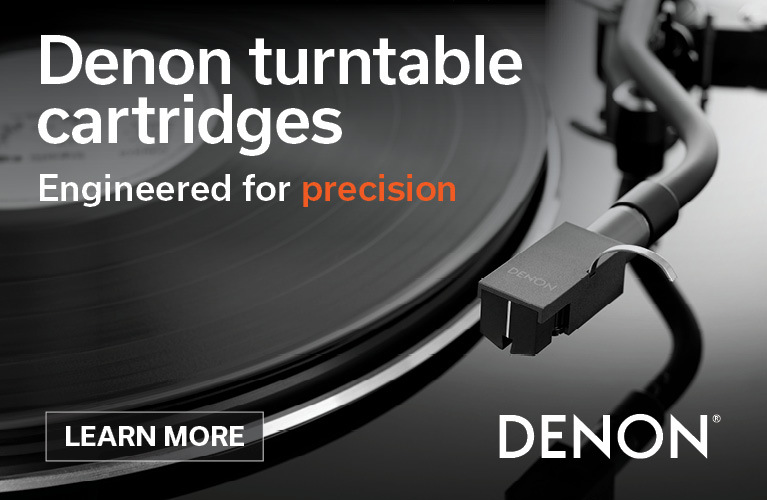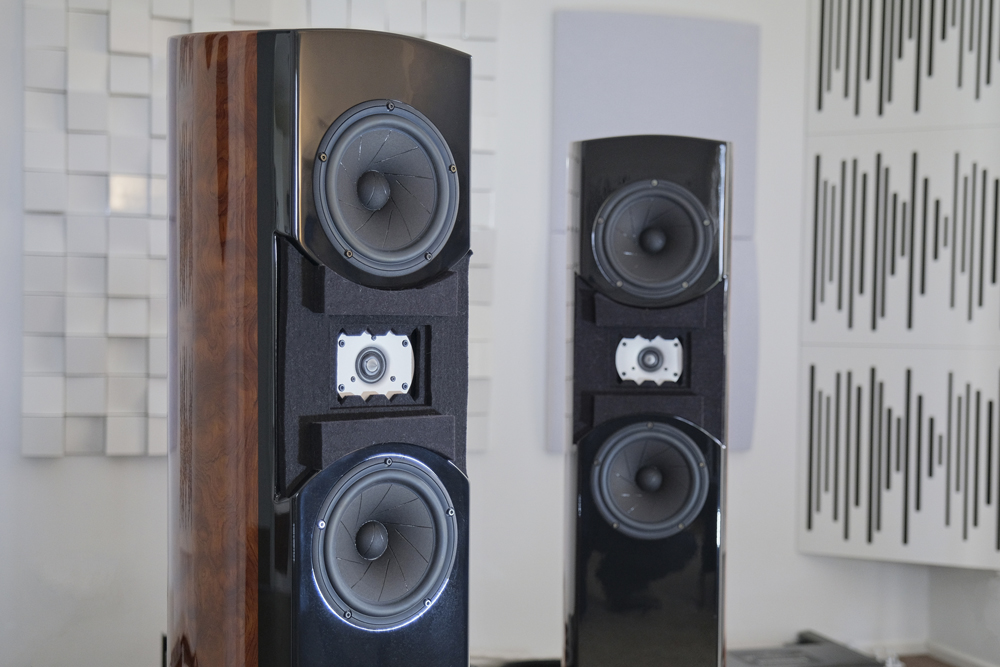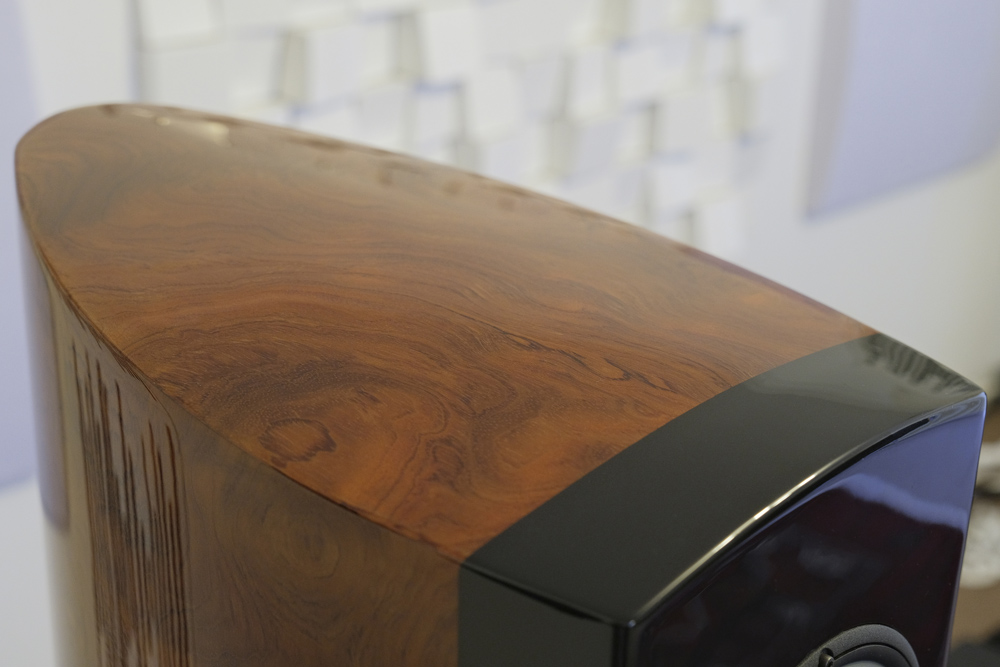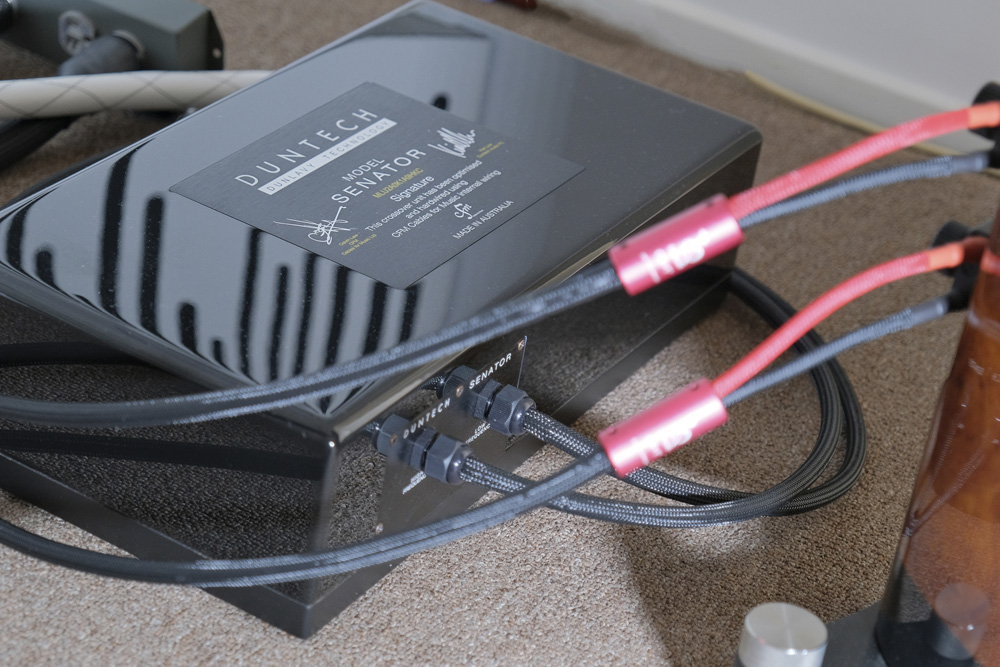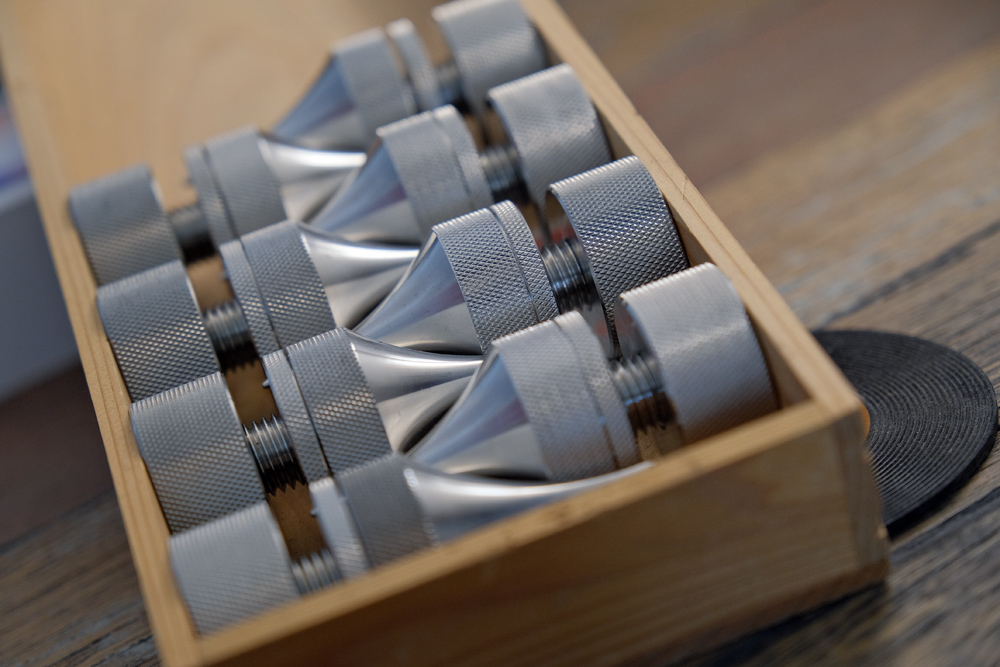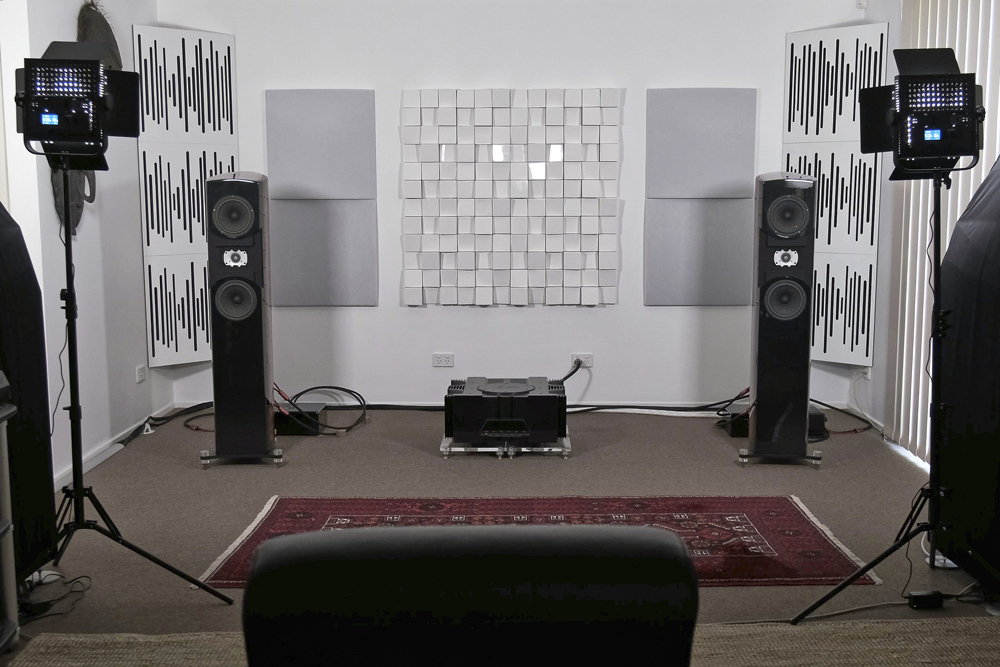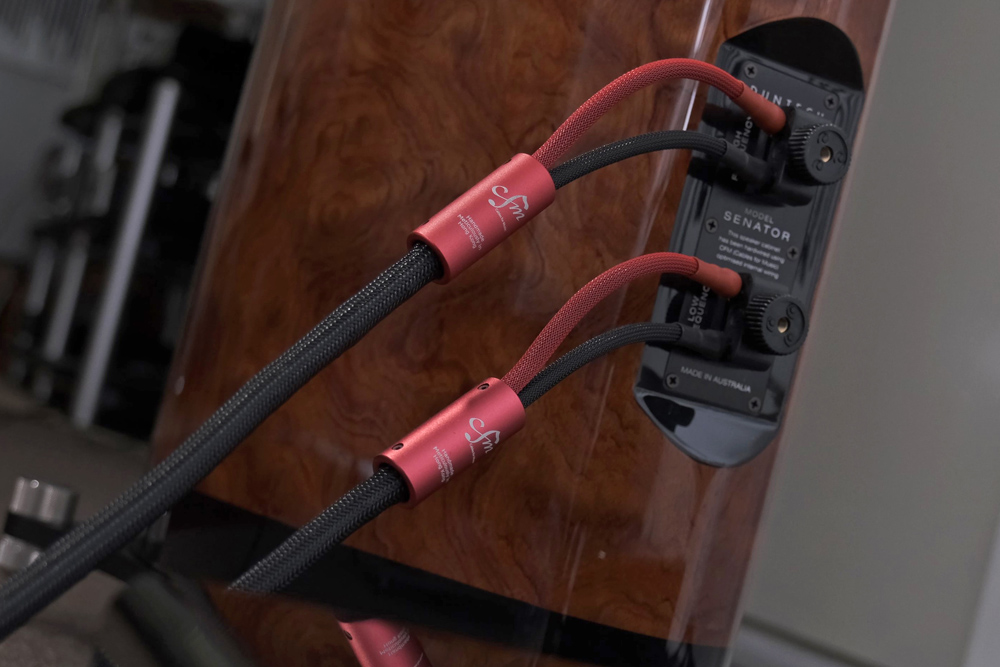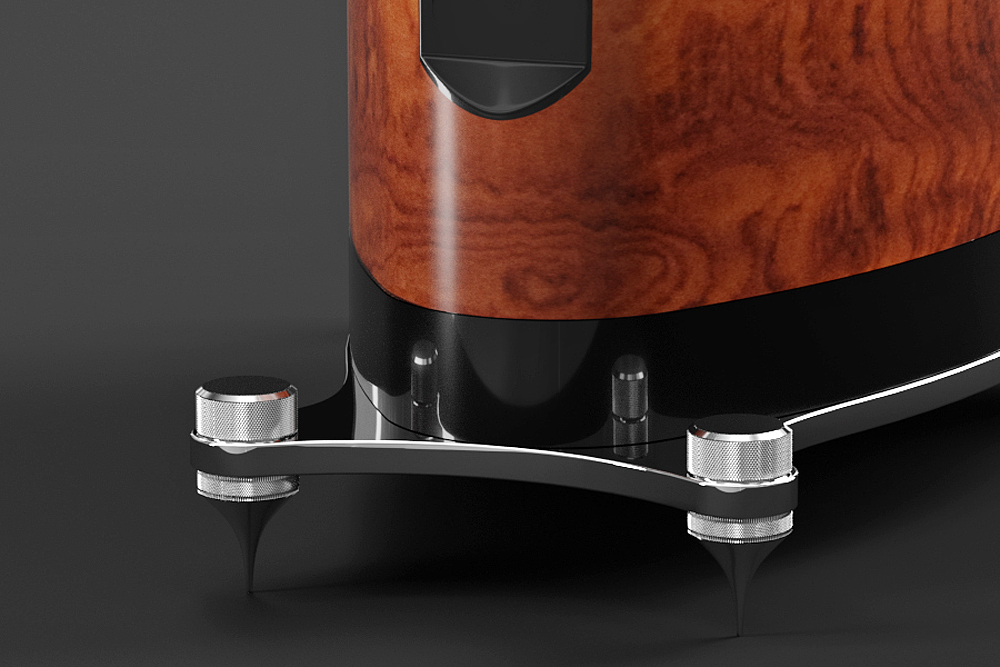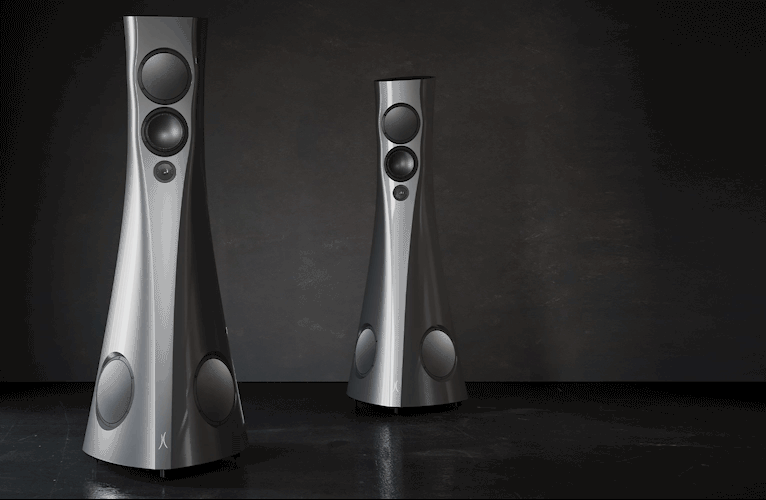Many, many moons ago – I’m talking a full lunar-solar cycle… oh, how time slips by – an Australian loudspeaker singularity big-banged with unprecedented disruptive force. Duntech Audio emerged in the last quarter of the previous century with a line of speakers soon to be widely hailed as exemplars of transducer accuracy and peerless engineering. I wanted them. Any model. Badly. Alas, out of my reach was the majestic Sovereign, a design which even today is lauded as one of the world’s best, bar none. In fact, many of the world’s finest recording and mastering studios still employ Sovereign speakers as the main monitors of choice. Today, the Senator loudspeakers, an entirely new design following Duntech Audio ideologies, is a mid-point beacon by which the revitalised company, once again, partakes in the competitive waters of the high-end audio seascape.
Beyond Centuries
Here’s a super-abbreviated history. Right at the start of the 1990s, post the near-decade-long success story of Duntech Audio as a formidable force in the high-end loudspeaker space, founder John Dunlavy sold the company and moved back to the USA, subsequently starting Dunlavy Audio Labs (DAL) in 1992. Employing the same design principles, DAL loudspeakers looked very similar to Duntech Audio designs albeit by utilising arguably inferior driver technology. Nevertheless, Dunlavy’s design genius wrung the most out of his transducer choices and he crafted superb-sounding speakers which played in the same high-end sandpit as Duntech Audio and actually stole some of that company’s limelight, especially in America.
DAL’s relatively successful market penetration and yet another ownership change at Duntech Audio led to the brand subsequently somewhat hibernating (although the demand for the by now iconic Sovereign kept that speaker’s production going). Then, after about a decade in business, sadly, John Dunlavy passed away, leading to DAL’s closure in 2002 and its designs disappearing altogether barring the ‘SC’ line of speakers’ prized value in the second hand market. Meanwhile, back in Australia, Duntech Audio remained in stasis. However, a few years ago Duntech Audio sprung back with its superb DSM-15 and, currently, its talented design team is producing compelling new products, in parallel to select legacy models under ongoing production.
Back to my story. On a day in the mid-90s when unconquerable gravitational forces pulled me towards Josef Riediger’s Audio Connection, that bazaar filled with the most delectable allure, I heard the Duntech Audio Statesman speakers and, still intoxicated with blissful music, I walked out with them… fully smitten. The Statesman provided immense pleasure for several years. In fact, despite being one of the smaller models (yet still over 1.2m tall), it was in many respects representative of the extraordinary larger designs. It had that signature seamlessness, powerful dynamics, overall accuracy, tight and deep bass (albeit with a definite lightness across the mid-bass) and an enormous soundfield, this last two aspects being strengths of sealed box design and time coherence, respectively.
Indeed, that trademark accuracy was the subject of an interesting experiment conducted by the ‘Beyond 2000’ television show here in Australia back in the mid-1980s. The show’s premise was to examine promising scientifically-sound technologies which were either emerging or within the realms of possibility for the future… beyond 2000.
The show’s producers hired a recording studio where they setup up Australian guitarist Evan Jones alongside a single Sovereign PCL-2001 (or PCL-2000, my memory fails me) Duntech’s famous flagship, a massive four-way 2m-tall tower resplendent with seven drivers in a symmetrical, stepped array. At the time, Dunlavy confidently reaffirmed some critics’ proclamations that the Sovereign loudspeakers were the most accurate in the world. There was something to that.
Beyond 2000’s producers brought in Flinders University Musicologist Enrique Gomez in an exercise to identify and discriminate between Jones’ live playing and the feed to the PCL-2001, with the task of switching live and playback allotted to John Dunlavy himself. The outcome was quite telling as Musicologist Gomez was honest enough to concede the difficulties he found in terms of distinguishing between the two performances. Beyond 2000 link: Beyond 2000: Duntech "Sovereign" Speakers- Fooled the Expert - YouTube
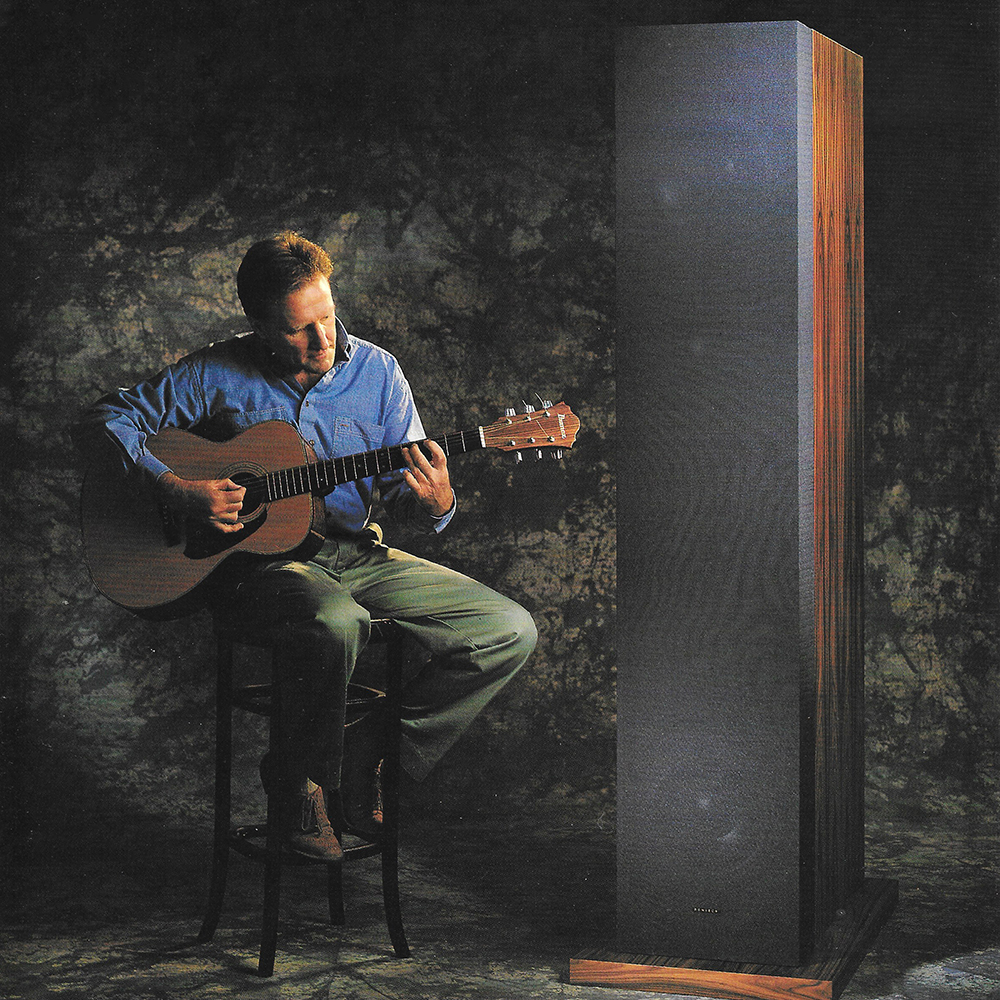 Live or Playback? The famed Duntech Audio Sovereign loudspeakers featured in the Beyond 2000 TV show
Live or Playback? The famed Duntech Audio Sovereign loudspeakers featured in the Beyond 2000 TV show
Of course, Duntech design exactness became synonymous with several technologies and functional aspects that have become rigorous “Duntech Prime Directives”, a set of tenets company owner Kiat Low refers to as non-negotiable. The John Dunlavy doctrines demand first-order crossover networks fine-tuned to provide time and pulse coherence with support from stepped baffles and symmetrical driver arrays in physical acoustic centre alignment. Heavy-duty felt around the drivers’ periphery helps the accuracy of propagation by cancelling stepped baffle diffraction irregularities.
While in principle the physical features of such a cabinet’s design may seem easy enough to implement by skilled craftsmen, the temporal aspects of such an endeavour as it relates to the technical relationship with the crossover and, ultimately, with human hearing can be complex. That the Duntech Audio engineers are able to achieve the target mandate is not trivial.
Further, the design mandate dictates very flat amplitude and phase responses within the audible frequency range aided by sealed enclosures associated with transient accuracy and gentle roll-off across the low-end. By design, the first-order crossover’s inherent principles allow time and phase coherence in conjunction with pulse and transient accuracy at a listening position approximately 3m to 3.5m. All of these laws and design aspects carry through to Duntech Audio’s current designs including, finally, the subject at hand the new Senator loudspeakers.
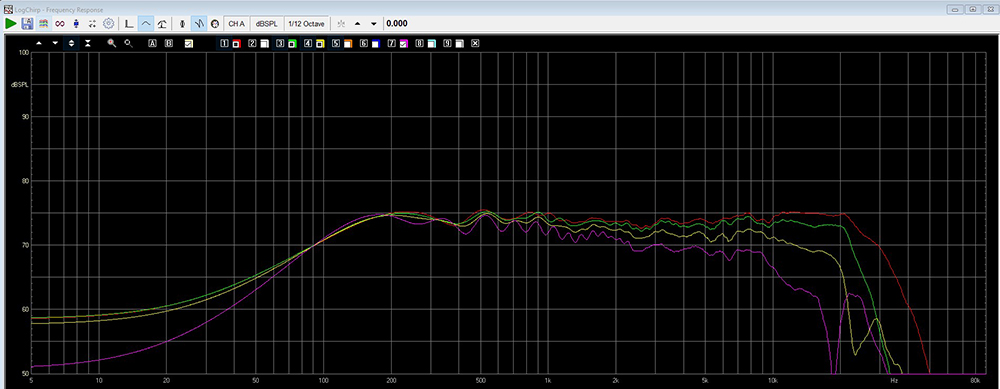
Time Travel
I’ve interviewed Duntech Audio proprietor Kiat Low a number of times and his insights from an encounter featured in these pages some time ago is still pertinent now, so they’re included here. Low discussed the challenges involved with designing to Duntech doctrines and their demands on driver design.
Designing a Duntech is a bit more involved than designing any other speaker and this is mainly due to the extremely limited drivers we can use. Most drive units available these days require very steep roll-off and this makes it unsuitable for Duntech. Basically a Duntech speaker driver rolls off at 6dB per octave. So searching for the right driver took us a great deal of time. After selecting a range of useable drivers, we begin the task of optimising it and quite often the drivers had to be slightly modified, either by the manufacturer or by us.
Duntech has been renowned for the proper phase coherency and time alignment techniques employed across its loudspeakers. How closely have the technologies been maintained or have they maybe even evolved in the new speakers, I asked.
To design the new Duntech loudspeakers, our design team had to follow a set of rules we call ‘Duntech Prime Directives’. Nothing had changed except for the availability of better spec parts. Firstly, the cabinet has to be a sealed box. The speaker has to be ‘Pulse Coherent’. A pulse coherent speaker is necessary for accurate sound reproduction. If the sound signals are coherent, then it will project from the speaker and arrive at the listener at the same time. Besides coherency, the speaker also has to be ‘Time Aligned’. In other words, the acoustic centres of all drive units have to be aligned on one plane. The issues caused by mechanical time alignment are addressed by the usage of felt, a patent owned by Duntech for many years.
In the past, Duntech speakers predominantly (with some exceptions) used Dynaudio drivers. What driver partnerships have been developed for the new Senator and Princess speakers and what made you select these in particular?
The drivers most suitable for us are now from the Scan-Speak and SEAS stable, admittedly with a slight modification to suit our needs. We have tried many drivers and most would not cut it in a first-order Butterworth topology. However we are investigating a couple of alternatives for our new Marquis and new Sovereign.
Recently Duntech Audio has been associated with Halcro another Australian world famous brand with a distinct approach to engineering. In your view, what are the reasons and synergies behind the association?
When we first hooked up our new speakers to the new Halcro Eclipse, the first thing that we noticed was “they sound damn good”. Why is it so? Looking further into it we discovered that Bruce Candy, the original designer of the Halcro amplifier personally owned a pair of Duntech Princess speakers and he had voiced the dm88 amplifier using his Duntech Princess. We still design the new Duntech loudspeakers the same way John Dunlavy would have done and naturally there would be a synergy there. We also discovered that when Bruce designed the dm88, he was listening for the same Holy Grail we were listening for and that is neutrality and musicality.
Low personally delivered the Senators chez Kramers. He assisted in room placement and auditioned the speakers in-situ for a brief period to his satisfaction. The pure Class-A Gryphon Antileon can grip the cojones of any speaker, no matter the impedance load while also offering a sonic picture at the highest performance level. Ditto for the accompanying components across the signal flow. So all was off to a great start. For the purposes of experimentation, after Low left, I spent a few hours shuffling speaker location. That led to the conclusion that the Senator is not a fussy design as far as room placement but, like ant great design, minor pleasures are discovered with a little brow sweat.
So as mentioned above, the Senator embraces all of Duntech Audio’s “Prime Directives”. It’s a 2-way sealed box design featuring a symmetrical driver arrangement comprising of the excellent Scan-Speak Revelator 25mm tweeter flanked top-and-bottom (a la D’Appolito) by twin Revelator 180mm sliced cone mid-bass drivers. Of course, the drivers are placed on a stepped baffle with the tweeter being recessed and nestled within a distinctly-patterned thick felt cocoon.
As is company tradition, Duntech publishes a particular specification which I have not seen provided by other loudspeaker makers. Of course, it’s related to pulse coherence, and the Senator is specified to provide a PCF (Pulse Coherency Factor) of less than 10 micro-seconds (in decimal terms, less than 0.00001 seconds!) propagation time error at 3.5m distance on the tweeter axis. How exactly that is measured does my head in. Micro-seconds are also quoted for the Senator’s power capacity at 500 watts peak power for 10 micro-seconds duration which could be equivalent to a super-fast transient. Having said that, Duntech recommends an amplifier rated at a minimum of 100 watts.
The remainder of the Senator’s specification sheet provides an illustration of tight parameters and skilful design. Frequency response is quote within +/- 1.5dB at 45 Hz to 35 kHz (3.5m measuring distance) while the -3dB point is said to be at 42 Hz (the slow bass roll-off of the first-order network design will provide the impression of deeper bass at -6dB and -10dB points). Efficiency is stated as 90dB SPL at 1 watt (2.83V at 1m) while the speaker’s nominal impedance is 4 ohms.
In-keeping with the pulse and time coherent mandate, the external crossover network is a highly-refined first-order hard-wired design and is externally placed in a large, solidly-built and rather heavy black gloss case. It’s adorned with a nicely brushed metal panel featuring model details and Kiat Low’s and Calvin Law’s signatures (more on Calvin Law and his company Cables for Music anon).
Duntech designs the internal crossover layout with very specific strategies, paying mindful attention to guiding of signal flow directionality while also carefully selecting a particular cable gauge with the desired sonic quality. Both these aspects are extremely important elements of the overall network circuit and are considered as crucial as parts quality.
Be that as it may, component quality is also high and features hand-picked metal oxide resistors from Mundorf and Mills and in critical sections of the network there are Duelund and PathAudio metal foil resistors. Also in the mix are bypass polypropylene capacitors made in France by SCR and Jensen capacitors. A selection of capacitors are durable ultra-fast square section while Duntech eschews electrolytic types.
The crossovers connects to the loudspeakers via a bespoke umbilical loom of the highly-regarded Cables for Music (CfM) ‘Songbird’ (from the ‘High-End’ series) and all connecting hardware/binding posts are Cardas CPBP for spades or bare wire. Internal cabling is also from the house of CfM. So, in a parallel narrative reflecting the synergies achieved with Halcro amplification, the collaboration of CfM cabling for the crossover network came about as a result of extensive listening with the subsequent conclusion that CfM cables and the Senator speakers made for a superbly copacetic relationship. In addition, the CfM cable loom opens the way to the company’s unique optional tuning and tweaking systems allowing experimentation to the user’s content.
The Senators incorporate a 15mm T6 aircraft-grade aluminium outrigger platform which helps stabilise and anchor the speakers to the surface below. An extra cost (AU$2000) polished stainless steel plinth is available upon request. Duntech provides with the Senators a custom-designed heavy duty spiking system which couples the speakers’ structure to the floor while also allowing level adjustment from above the outrigger via massive knurled knobs.
Cabinet quality is outstanding. The slim, tall and gently-curving enclosure tapers down towards the narrow back and there are no parallel surfaces as even the top panel angles down towards the front baffle. It’s a handsomely-styled, well-braced cabinet with good knock test solidity with an absence of hollow resonances. The baffle, in the sections where the two mid-bass drivers are mounted, is beautifully finished in gloss black while the review samples’ cabinets came in a glorious gloss Pommele Bubinga wood veneer.
Time is a Great Story Teller
Yes… There’s something about this time thingamajig. I hear it on my reference Wilson Audio Alexia S2 speakers too, where unlike Duntech’s stepped baffle, physical driver alignment is achieved via adjustable calibrated driver modules to focus the acoustic propagation and arrival at the listening position.
The correctness in the representation of the soundfield, especially the perspectives of depth and height, is there too with the Senator. An outstanding example of a soundscape massively stretching across all dimensions is in Ani DiFranco’s Live in Clip where the track “Amazing Grace” shows its thorough illusion of being in the audience in a large arena. The Senators recreated as big a soundscape as I’ve heard in this room. Up there with the best of them, and I both live and have had in for review some real over-achievers in that department. Again, crowd noises came from, seemingly, dozens of meters away in the depth perspective while stretching wide and tall. This track is worth seeking out as a real test of your system’s soundstaging powers. The soundfield may be huge but the Senators’ don’t sacrifice imaging focus and accuracy. DiFranco was precisely focused on the stage and embodied via a realistic-sounding recreation of size and presence. Ditto for the drums behind her, rendered in the correct size/scale.
The Senators’ precision in time handling and propagation also shows itself in tonal accuracy. There’s a more precise, balanced sonic picture which also rewards with truer timbrel qualities. Well-recorded albums featuring acoustic guitars and drums, such as Curandero’s Arás sees Ty Burhoe’s varied drum work (tabla, congas, sarangi and many more) and Miguel Espinoza’s gut string Flamenco guitar along with, in particular the track “Segue”, Bela Fleck’s masterful banjo and Kai Eckhardt’s slick bass playing, all sounded true, pure and realistic. When tone is done right, you instinctively know, mostly, and the Senators handle timbrel signatures truthfully.
The Revelator tweeter’s resolution powers are widely considered among the very best. It’s called the Revelator for a reason – good call Scan-Speak. In the Senator’s context, the transducer is beautifully balanced to offer extraordinary levels of detail while always keeping any brightness or etch well at bay. Non-existent actually. Complexities in the music are dissected with great precision – there’s no detail left behind here, no music strand stone left unturned. Yes, separation is first-class. Minutiae in the strings of Samba Diabaté and Vincent Zanetti’s Kala Jula album were superbly presented in a way which didn’t shove it down your ear passage. Rather, it blended the nuances in service of the music while maintaining the distinctiveness of each instrument’s tonal signature and the dynamic ‘dance’ between the two players.
Those pesky Duntech Audio “Prime Directives” which demand the use of first-order crossovers can be taxing on the drivers. They need to span a wide frequency range extending across the slow 6dB roll-off post crossover point. Then, the mandate for a sealed enclosure places its own demands on the very same drivers (which operate as midrange and bass drivers in the case of the Senators). It was therefore a pleasant surprise – and a credit to the engineering team’s skilful fine-tuning of the crossover network and overall design – to find the Senators’ excellent handling of midrange and bass dynamics. In fact, my listening notes’ first entry read: “Remarkable midrange dynamics!” This is no mean feat given the technical requirements of the design.
As an example, the slam across the Senators’ entire frequency range on Jackson Browne’s “Sergio Leone” from The Naked Ride Home album was quite arresting. This is a very well-produced recording and the previously-mentioned fine detail retrieval pays dividends at the track’s intro section where the acute guitar string pickings are revealed fully. Later, the chorus is a powerful explosion of massed voices, blasting drums and heightened guitar strums. There’s authority without softening of that crucial crescendo. Around the track’s three-quarter mark, an almost subsonic, slurred (or it may be what’s technically referred to as a ‘pull-off’) note sounded quite deep, if not the lowest I’ve heard bearing in mind we’re talking a 2-way mid-sized floorstander, but it may have been among the most defined. Thank you sealed enclosure.
That superb bass definition is a product of the cabinet design which also presents an added benefit in terms of a relatively easy to accommodate speaker – great low-end is achievable in a variety of room positions (within reason, of course). The caveat here being that Duntech recommends a listening distance of around 3m to 3.5m in order for the drivers to coalesce acoustically. Follow that guideline and you’ll get a seamlessness which is almost point-source-accurate.
I loved the truthful tonality of Maximiliam Hornung’s cello on Cello Concertos of 1966 (Deutsches Symphonie-Orchester Berlin conducted by Andris Poga), a compilation of works from Georgian composer Sulkhan Tsintsadze and Russian Dmitri Shostakovich. The Senators presented a satisfying sense of the instrument’s internal volume manifested as terrific body and presence while the rosin and string was aggressive when needed and oh-so-sweet when required. When the orchestra plays with full force in Tsintsadze’s “Episode IV (Finale): Presto”, it’s an arresting storm accented by a barrage of powerful drums and supported by a massively-portrayed orchestral crescendo.
The Senators played with a familiar rightness. Maybe subconsciously, I’ve appreciated the sonics, and gravitated to owning, speakers which in their own way shared many of the “Prime Directives”. Of course, there was Duntech’s already-mentioned Statesman. Even my custom-built Dual Concentric Tannoy Cheviot aimed at similar ‘coincident’ end results. My beloved Thiel CS2.3, which I owned for several years, employed many of Duntech’s technical aspects too (first-order crossovers, angled baffle for acoustic centre alignment and sealed enclosures). The CS2.3 wasn’t the most balanced speaker I’ve owned – it needed superlative care in terms of matching with amplification and cabling to tame a slight brightness but, that being dealt with, it certainly was one of the most coherent. Subsequently, the various Wilson Audio WATT/Puppy versions I so treasured as enjoyable music players and reviewer tools used angled baffles and simple adjustments for acoustic focus/alignment.
Then, for the last few years, as described above, both the Wilson Audio Alexia and Alexia Series 2 feature a number of independent mechanical driver alignment stratagems resulting in a focused sound arrival at the listening position.
All of those excellent designs also share a rich tonality, truly cavernous soundfields and surgically-precise image focus. The Senator is among the leading lights.
Conclusion
This review took me back to a time before I entered the industry as a professional audio writer all those years ago (back then however, I was Editor of the monthly newsletter for the Audiophile Society of NSW under then-President Justin Lam; later I had the privilege of becoming the society’s President). For some years, while under the towering shadow of the extraordinary Sovereign, its little brother the Statesman provided me with rich musical experiences unattained to that point in my journey. Being a three-driver 2-way of roughly the same physical stature and with the full armoury of Prime Directives, the similarities are undeniably there between Statesman and Senator. So are the pleasures… but multiplied.
It was a long-time-coming, the Senator. Kiat Low and his design team are meticulous. As company head, Low especially agonised over the levels of finish and the overall quality of the design down to the smallest detail. Ditto for the ‘voicing’ of the speakers, which took many, many months to perfect in order to arrive at the Senator’s final destination. Everything had to be 100%... Duntech.
So given all of the firmly-mandated and methodical engineering combined with the painstaking attention to every detail, it’s no surprise then that the Senators radiate excellence from every angle and are so absolutely adept at presenting music. Here, accuracy and musicality play a symbiotic dance.
The Senator’s most compelling example of truth, its purest coherence, is in the faithful communication of the composers’ and musicians’ intentions. And for this writer, those “Prime Directives” are the most precious of all.
… Edgar Kramer
This email address is being protected from spambots. You need JavaScript enabled to view it.
Associated Equipment
- Speakers — Wilson Audio Alexia Series 2, Axis Loudspeakers VoiceBox S (nearfield monitor), Vermouth Audio Little Luccas Mk.II
- Amplifier — Gryphon Audio Antileon EVO
- Preamplifier — Supratek Cortese, Lightspeed Attenuator LDR passive, Totaldac d1-direct DAC
- Sources — Digital:432EVO High-End Music Server Roon Core, Yamaha CD-S2100 transport, Totaldac d1-direct DAC. Analogue: Transrotor Crescendo with Konstant Studio controller, Reed 1X Tonearm with upgraded internal wiring, Shelter Harmony cartridge, The Funk Firm Houdini cartridge decoupler, Supratek Cortese & REDGUM Audio RGPH2 phono stages
- Cables — PSC Audio custom design XLR, Vermouth Audio Reference loom,Cables for Music Songbird loom + MasterPro/OnEarth grounding system
- Audio Rack — SGR Audio Statement Model V
- Acoustic Treatment — Vicoustic Multifuser Wood, Wavewood Ultra, Cinema Round Premium and Super Bass Extreme
- Miscellaneous — GigaWatt PF-1 EVO, Les Davis Audio Viscoelastic CLD discs, VRC Vinyl Record Cleaning systemplus miscellaneous accessories
Duntech Audio Senator Loudspeakers
Price: AU$30,000
Australian Warranty: Five Years
Australian Distributor: Duntech Audio
+61 2 9584 1822
www.duntech.com
Duntech Audio
12A Lime Kiln Road
Lugarno NSW 2210
Sydney, Australia
+61 2 9584 1822
www.duntech.com

